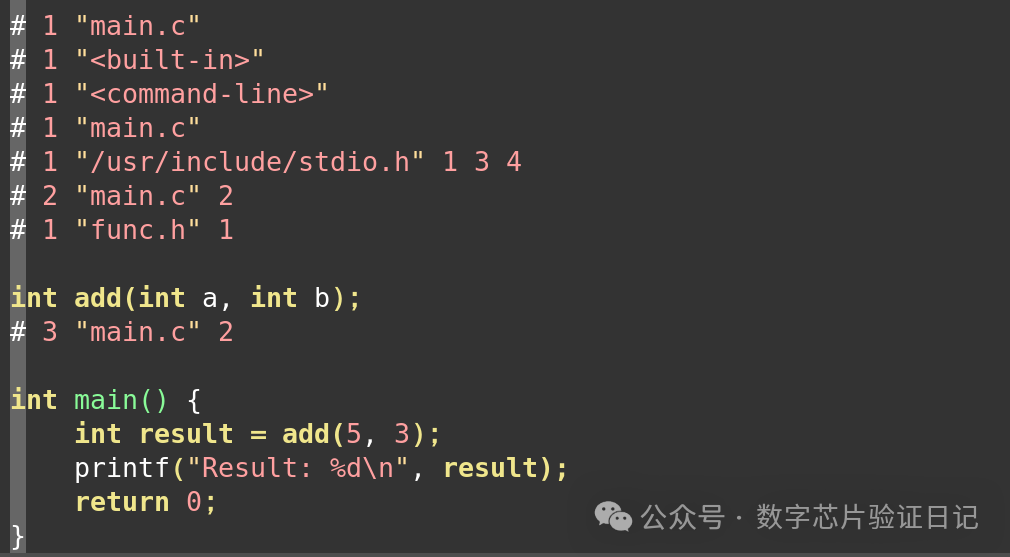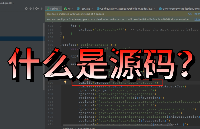算法是一個(gè)程序和軟件的靈魂,作為一名優(yōu)秀的程序員,只有對一些基礎(chǔ)的算法有著全面的掌握,才會(huì)在設(shè)計(jì)程序和編寫代碼的過程中顯得得心應(yīng)手。本文是近百個(gè)C語言算法系列的第二篇,包括了經(jīng)典的Fibonacci數(shù)列、簡易計(jì)算器、回文檢查、質(zhì)數(shù)檢查等算法。也許他們能在你的畢業(yè)設(shè)計(jì)或者面試中派上用場。
1、計(jì)算Fibonacci數(shù)列
Fibonacci數(shù)列又稱斐波那契數(shù)列,又稱黃金分割數(shù)列,指的是這樣一個(gè)數(shù)列:1、1、2、3、5、8、13、21。
C語言實(shí)現(xiàn)的代碼如下:
/* Displaying Fibonacci sequence up to nth term where n is entered by user. */#include int main(){ int count, n, t1=0, t2=1, display=0; printf("Enter number of terms: "); scanf("%d",&n); printf("Fibonacci Series: %d+%d+", t1, t2); /* Displaying first two terms */ count=2; /* count=2 because first two terms are already displayed. */ while (count
結(jié)果輸出:
Enter number of terms: 10Fibonacci Series: 0+1+1+2+3+5+8+13+21+34+
也可以使用下面的源代碼:
/* Displaying Fibonacci series up to certain number entered by user. */ #include int main(){ int t1=0, t2=1, display=0, num; printf("Enter an integer: "); scanf("%d",&num); printf("Fibonacci Series: %d+%d+", t1, t2); /* Displaying first two terms */ display=t1+t2; while(display
結(jié)果輸出:
Enter an integer: 200Fibonacci Series: 0+1+1+2+3+5+8+13+21+34+55+89+144+
2、回文檢查
源代碼:
/* C program to check whether a number is palindrome or not */ #include int main(){ int n, reverse=0, rem,temp; printf("Enter an integer: "); scanf("%d", &n); temp=n; while(temp!=0) { rem=temp%10; reverse=reverse*10+rem; temp/=10; } /* Checking if number entered by user and it's reverse number is equal. */ if(reverse==n) printf("%d is a palindrome.",n); else printf("%d is not a palindrome.",n); return 0;}
結(jié)果輸出:
Enter an integer: 1232112321 is a palindrome.
3、質(zhì)數(shù)檢查
注:1既不是質(zhì)數(shù)也不是合數(shù)。
源代碼:
/* C program to check whether a number is prime or not. */ #include int main(){ int n, i, flag=0; printf("Enter a positive integer: "); scanf("%d",&n); for(i=2;i<=n/2;++i) { if(n%i==0) { flag=1; break; } } if (flag==0) printf("%d is a prime number.",n); else printf("%d is not a prime number.",n); return 0;}
結(jié)果輸出:
Enter a positive integer: 2929 is a prime number.
4、打印金字塔和三角形
使用 * 建立三角形
** ** * ** * * ** * * * *
源代碼:
#include int main(){ int i,j,rows; printf("Enter the number of rows: "); scanf("%d",&rows);//微信搜索公眾號(hào)【C語言中文社區(qū)】關(guān)注回復(fù)C語言,免費(fèi)領(lǐng)取200G學(xué)習(xí)資料 for(i=1;i<=rows;++i) { for(j=1;j<=i;++j) { printf("* "); } printf(" "); } return 0;}
如下圖所示使用數(shù)字打印半金字塔。
11 21 2 31 2 3 41 2 3 4 5
源代碼:
#include int main(){ int i,j,rows; printf("Enter the number of rows: "); scanf("%d",&rows); for(i=1;i<=rows;++i) { for(j=1;j<=i;++j) { printf("%d ",j); } printf(" "); } return 0;}
用 * 打印半金字塔
* * * * ** * * ** * * * **
源代碼:
#include int main(){ int i,j,rows; printf("Enter the number of rows: "); scanf("%d",&rows); for(i=rows;i>=1;--i) { for(j=1;j<=i;++j) { printf("* "); } printf(" "); } return 0;}
用 * 打印金字塔
* * * * * * * * * * * * * * * ** * * * * * * * *
源代碼:
#include int main(){ int i,space,rows,k=0; printf("Enter the number of rows: "); scanf("%d",&rows); for(i=1;i<=rows;++i) { for(space=1;space<=rows-i;++space) { printf(" "); } while(k!=2*i-1) { printf("* "); ++k; } k=0; printf(" "); } return 0;}
用 * 打印倒金字塔
* * * * * * * * * * * * * * * * * * * * * * * * *
源代碼:
#includeint main(){ int rows,i,j,space; printf("Enter number of rows: "); scanf("%d",&rows); for(i=rows;i>=1;--i) { for(space=0;space
5、簡單的加減乘除計(jì)算器
源代碼:
/* Source code to create a simple calculator for addition, subtraction, multiplication and division using switch...case statement in C programming. */ # include int main(){ char o; float num1,num2; printf("Enter operator either + or - or * or divide : "); scanf("%c",&o); printf("Enter two operands: "); scanf("%f%f",&num1,&num2); switch(o) { case '+': printf("%.1f + %.1f = %.1f",num1, num2, num1+num2); break; case '-': printf("%.1f - %.1f = %.1f",num1, num2, num1-num2); break; case '*': printf("%.1f * %.1f = %.1f",num1, num2, num1*num2); break; case '/': printf("%.1f / %.1f = %.1f",num1, num2, num1/num2); break; default: /* If operator is other than +, -, * or /, error message is shown */ printf("Error! operator is not correct"); break; } return 0;}
結(jié)果輸出:
Enter operator either + or - or * or divide : -Enter two operands: 3.48.43.4 - 8.4 = -5.0
6、檢查一個(gè)數(shù)能不能表示成兩個(gè)質(zhì)數(shù)之和
源代碼:
#include int prime(int n);int main(){ int n, i, flag=0;//微信搜索公眾號(hào)【C語言中文社區(qū)】關(guān)注回復(fù)C語言,免費(fèi)領(lǐng)取200G學(xué)習(xí)資料 printf("Enter a positive integer: "); scanf("%d",&n); for(i=2; i<=n/2; ++i) { if (prime(i)!=0) { if ( prime(n-i)!=0) { printf("%d = %d + %d ", n, i, n-i); flag=1; } } } if (flag==0) printf("%d can't be expressed as sum of two prime numbers.",n); return 0;}int prime(int n) /* Function to check prime number */{ int i, flag=1; for(i=2; i<=n/2; ++i) if(n%i==0) flag=0; return flag;}
結(jié)果輸出:
Enter a positive integer: 3434 = 3 + 3134 = 5 + 2934 = 11 + 2334 = 17 + 17
7、用遞歸的方式顛倒字符串
源代碼:
/* Example to reverse a sentence entered by user without using strings. */ #include void Reverse();int main(){ printf("Enter a sentence: "); Reverse(); return 0;}void Reverse(){ char c; scanf("%c",&c); if( c != ' ') { Reverse(); printf("%c",c); }}
結(jié)果輸出:
Enter a sentence: margorp emosewaawesome program
8、實(shí)現(xiàn)二進(jìn)制與十進(jìn)制之間的相互轉(zhuǎn)換
/* C programming source code to convert either binary to decimal or decimal to binary according to data entered by user. */ #include #include int binary_decimal(int n);int decimal_binary(int n);int main(){ int n; char c; printf("Instructions: "); printf("1. Enter alphabet 'd' to convert binary to decimal. "); printf("2. Enter alphabet 'b' to convert decimal to binary. "); scanf("%c",&c); if (c =='d' || c == 'D') { printf("Enter a binary number: "); scanf("%d", &n); printf("%d in binary = %d in decimal", n, binary_decimal(n)); } if (c =='b' || c == 'B') { printf("Enter a decimal number: "); scanf("%d", &n); printf("%d in decimal = %d in binary", n, decimal_binary(n)); } return 0;} int decimal_binary(int n) /* Function to convert decimal to binary.*/{ int rem, i=1, binary=0; while (n!=0) { rem=n%2; n/=2; binary+=rem*i; i*=10; } return binary;} int binary_decimal(int n) /* Function to convert binary to decimal.*/{ int decimal=0, i=0, rem; while (n!=0) { rem = n%10; n/=10; decimal += rem*pow(2,i); ++i; } return decimal;}
結(jié)果輸出:
9、使用多維數(shù)組實(shí)現(xiàn)兩個(gè)矩陣的相加
源代碼:
#include int main(){ int r,c,a[100][100],b[100][100],sum[100][100],i,j; printf("Enter number of rows (between 1 and 100): "); scanf("%d",&r); printf("Enter number of columns (between 1 and 100): "); scanf("%d",&c); printf(" Enter elements of 1st matrix: "); /* Storing elements of first matrix entered by user. */ for(i=0;i
結(jié)果輸出:
10、矩陣轉(zhuǎn)置
源代碼:
#include int main(){ int a[10][10], trans[10][10], r, c, i, j; printf("Enter rows and column of matrix: "); scanf("%d %d", &r, &c); /* Storing element of matrix entered by user in array a[][]. */ printf(" Enter elements of matrix: "); for(i=0; i
責(zé)任編輯:lq








 10大C語言基礎(chǔ)算法珍藏版源碼
10大C語言基礎(chǔ)算法珍藏版源碼











評(píng)論